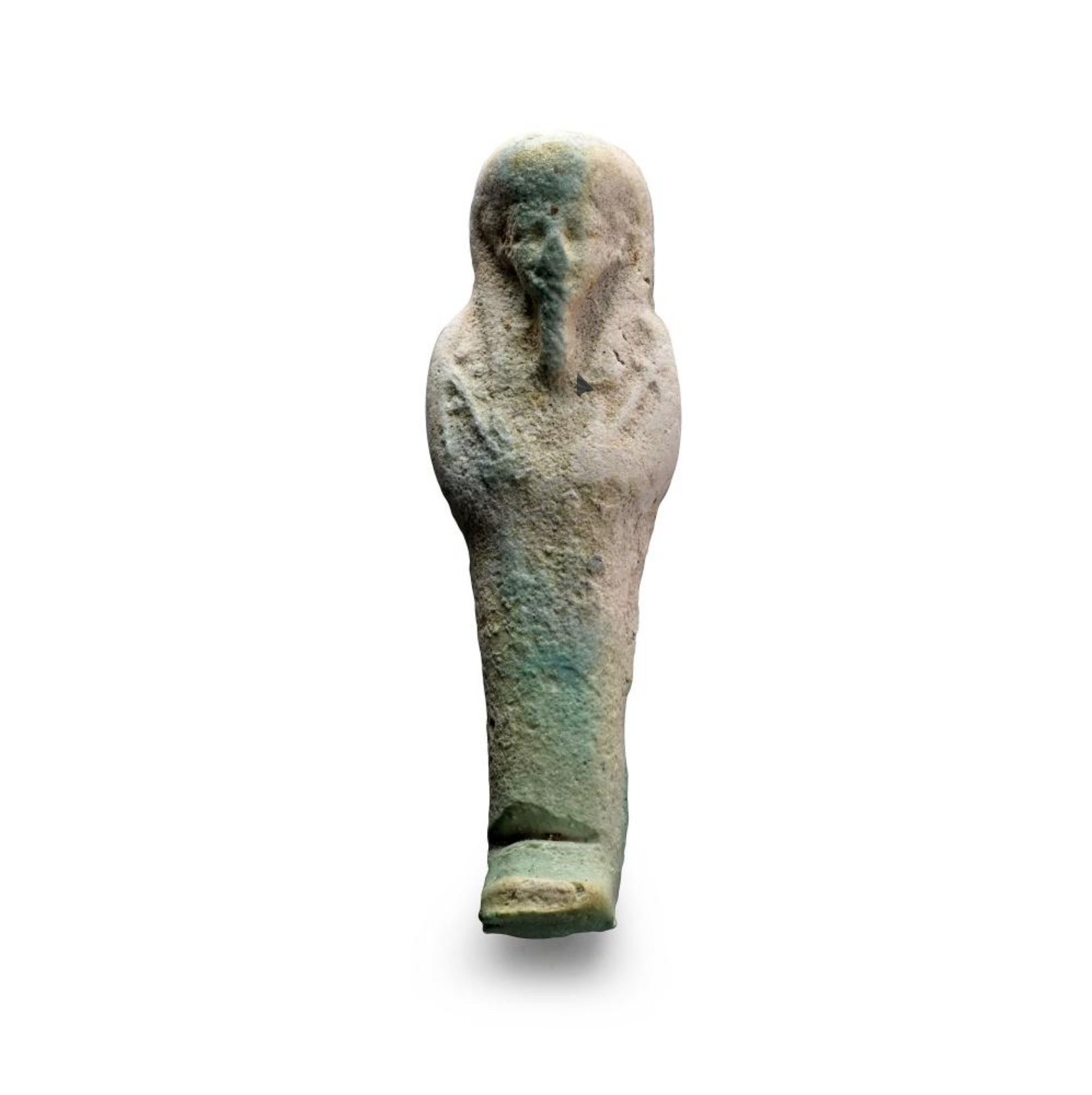Date
Ptolemaic Period, 332–30 B.C.
Dimensions
2 ½ in. (63 mm), 9.17 g
Material
Pale blue faience
Condition
Very Good – intact with minor glaze wear consistent with age.
Description
This small pale blue faience shabti, standing 6 cm tall, dates from Egypt’s Ptolemaic Period a time when Greek and Egyptian cultures merged under the dynasty founded by Ptolemy I. Shabtis (or ushabtis) were funerary servant figures, placed in tombs to perform agricultural labor for the deceased in the afterlife.
Mummiform in shape, this example shows the traditional false beard and crossed agricultural implements, symbolizing readiness to serve Osiris. Its vibrant blue glaze reflects the Egyptians’ association of color with rebirth and divinity.
Reference For Similar
Cf. Schneider, H.D., Shabtis: An Introduction to the History of Ancient Egyptian Funerary Statuettes, Vol. 3, Leiden, 1977, p. 79, no. 5.3.4.147.
Provenance
- Ex London collection, 1990s
-
London, September 2025
Authentication
Accompanied by illustrated lot declaration signed by Dr. Raffaele D’Amato.
Sold and exported in full compliance with the UK Cultural Objects (Offences) Act 2003.
Accompanied by the original illustrated lot declaration and invoice.



